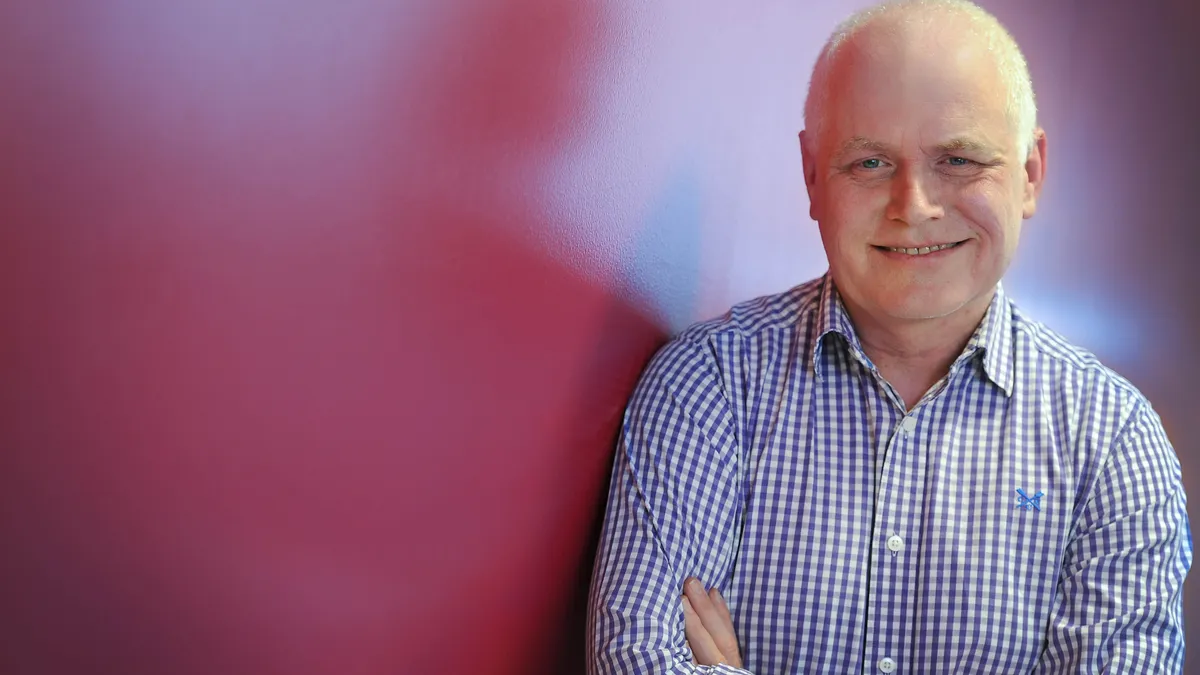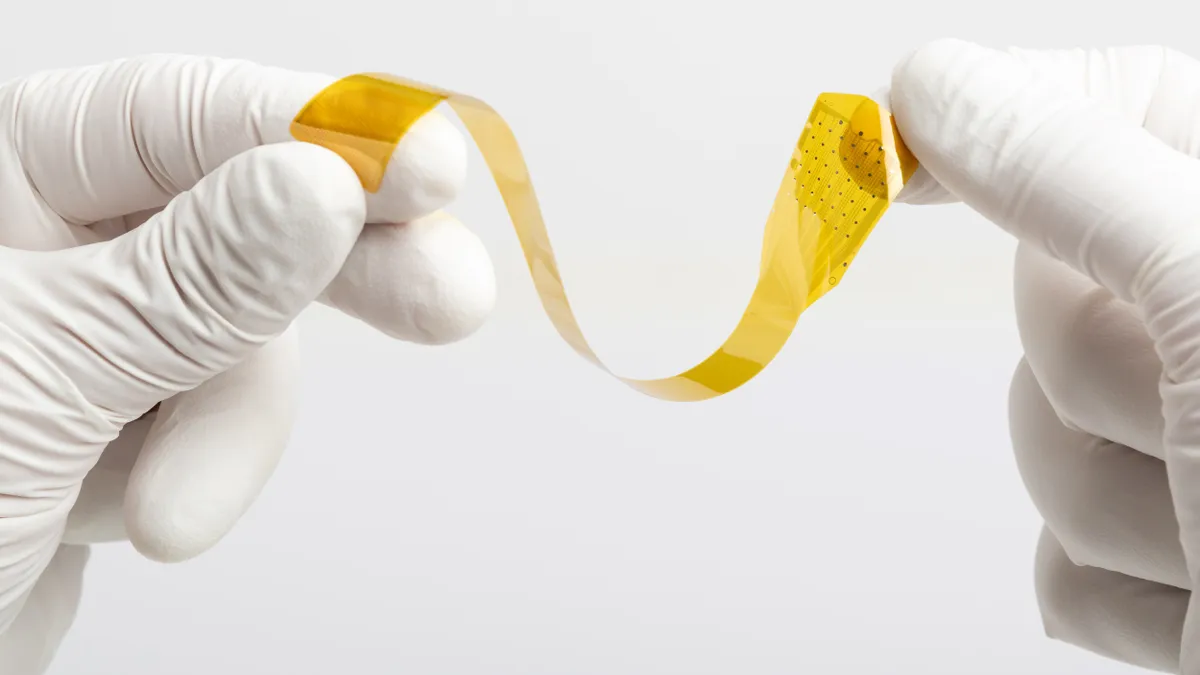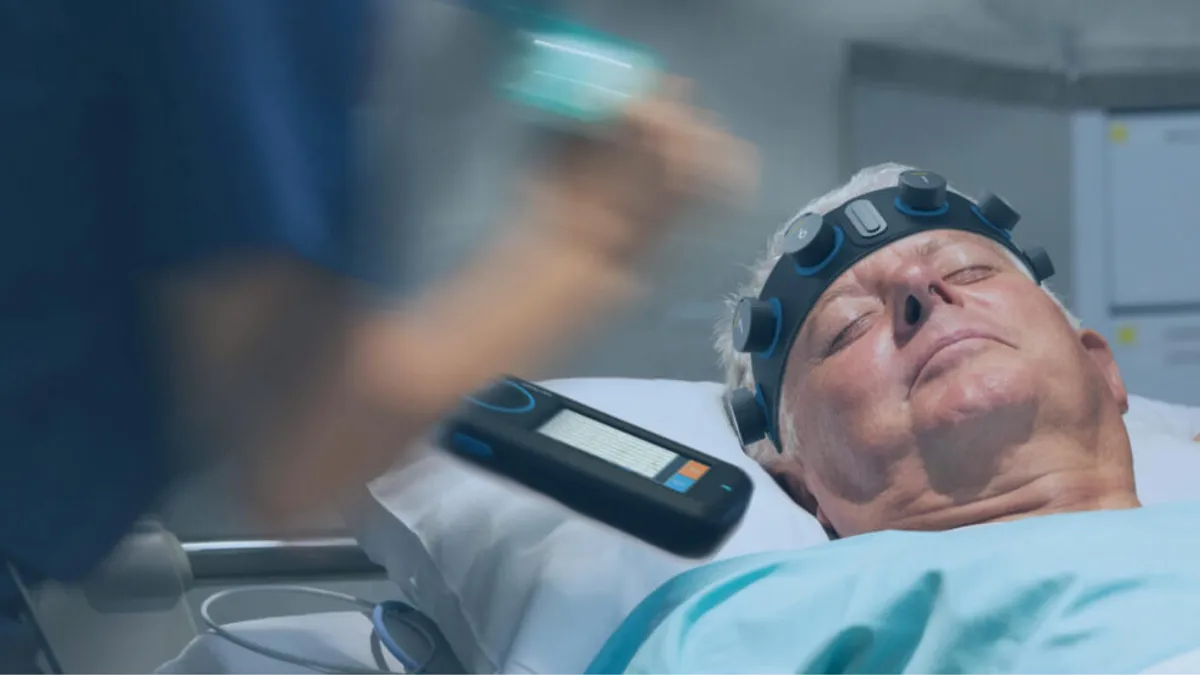A CE mark earlier this year opened the door for Cambridge, England-based CMR Surgical to begin challenging minimal access robotic surgery market leader Intuitive Surgical.
Several robot-assisted platforms have emerged during the last decade from medtech giants like Stryker, Zimmer Biomet and Medtronic for use in spine and brain surgeries or joint replacement procedures. But when it comes to technology for minimally invasive soft tissue procedures (for example, colorectal, gynecologic and general surgery applications), Intuitive has gone mostly uncontested since it first won FDA clearance and went public in 2000.
Through adoption of its da Vinci platform, Sunnyvale, California-headquartered Intuitive has "done a very good job educating the market, and obviously converting a lot of the market," CMR's chief executive Martin Frost said in an interview with MedTech Dive. "But essentially that's been a monopoly for 18 years."
Since CMR's founding five years ago, the company's Versius system has been clinically tested in laparoscopic gynecologic and upper gastrointestinal procedures. Frost cast the product's modular design and lower (but unspecified) price point as differentiators that will help CMR quickly gain a foothold in the robot-assisted minimal access surgery market. According to CMR, that market currently generates $4 billion yearly and is expected to grow five-fold in as many years.
CMR already has a commercial team on the ground in the U.S. and is awaiting FDA marketing authorization, after filing a submission with the agency this past spring. "I'm hopeful that we will have commercial systems in the United States next year," Frost said, where about two-thirds of Intuitive's placed robots lie.
Worldwide, Intuitive's system placements tally close to 5,300 and its market capitalization today sits at more than $62 billion. Privately held CMR, meanwhile, is just beginning sales of Versius, announcing its inaugural system placements earlier this month. But the company claims its Series C fundraising round disclosed in September, worth more than $240 million, is the largest private financing round in a European medtech's history.
"Typically, U.K. or European companies are at a disadvantage; it's sort of widely accepted that it's easier to get the early adoption [or the capital] in the States," Frost said.
"There's a lot of support for us over here. It's also nice that our nearest competitors aren't sort of just down the road in California," he added.
Still, Frost downplayed the nature of CMR's rivalry with Intuitive. "Our intention here is to expand the market for robotics," he said. "We don't see ourselves winning at the expense of existing incumbents in the market."
Early adopters of Versius include "a mix between people who have been familiar with robotics and the da Vinci system and people who haven't yet been exposed to a robot at all," Frost said.
Both Intuitive and CMR face imminent commercial competition from Johnson & Johnson's in-development digital surgery platform, set to come on the scene in 2020, and Medtronic's recently unveiled minimally invasive robotic system is not far behind.
In the meantime, CMR's next few months will feature additional system placements, primarily across mainland Europe and India, Frost said.
Speaking with MedTech Dive, Frost discussed potential consolidation in the robotic surgery market, how to build on its "platform technology," and plans to tap into ambulatory surgery centers.
Questions and responses have been edited for clarity and brevity.
Can you give a sense of your sales structure?
FROST: We are bringing this to market through what we call a managed service model, which is offering customers flexibility in terms of how they want to buy the system. Although some customers do want to buy systems outright, we speak to many customers who would prefer to pay for the system over [its lifetime]. So we like to look at this in terms of the whole life cost of the robotic program — not just the system, but the instruments and the matrix of services — and we enable the customer to pay for it over the lifetime of that contract, which could be five or six years.
Our goal has always been — and is — to get the per-procedure cost of robotics as close to the cost of manual laparoscopic instruments as possible. At the moment, robotics add $2,000 to $3,000 per procedure over and above the cost of manual instruments. And we believe that that difference should be much lower, in the hundreds of dollars.
Since you announced your big funding round, we’ve seen the Medtronic presentation about what they have coming down the pike. You all have the head start in bringing your product to market; how do you plan to capitalize on that?
FROST: Well, I think it's great, first of all, that we do have that head start. We believe there are also other advantages in terms of the versatility and the portability of our system, compared to [Medtronic's system, Hugo]. We have significant demand for the system, and it's great to be able to start to fill that demand before Hugo is commercially released.
Hospitals all over the world have dealt with obviously large vendors (J&J, Medtronic, Intuitive). I think we're encouraged by the response we're getting from the market to the different commercial approach.
I think the market we enter now will be exciting for a few years as new companies enter it. But I think ultimately, that market will also only get to three or four large companies. And so I do expect there to be some consolidation in this market, but I'm very, very confident that Versius will be one of those three to four robotic platforms that will be enabling surgeons to do minimal access surgery for decades to come.
How do you plan to ramp up marketing in the U.S. to really get your name out there?
FROST: Although there are something like 3,000 robots installed in the USA, there are also parts of the U.S. market which are still relatively under-penetrated. So, for example, the ambulatory surgery call center market is still a [fairly young market] that we believe will play really well to the features and benefits of Versius. So when we do have FDA approval ... we see this as a combination of some of the leading teaching academic centers together with [the] largely under-penetrated surgical center market.
Has there been opportunity for any investment in R&D behind the scenes as you’ve been working on Versius?
FROST: When you start a company, you always have to make a choice between how focused you're going to be on getting your first product out there versus continuing to innovate around the space. We believe there needs to be —and we're already investing in — new visualization technologies that we think will be very important to this space now and going forward.
But we always start with what what the market tells us: what surgeons, clinicians, hospitals tell us they need first. We’re a business; we set out to fill a need rather than having an interesting piece of technology that we wanted to build into a product.
There's clearly lots of interesting new technology in the neuro space, in the spine space, in the orthopaedic space. Robotics will absolutely start to transform other parts of the OR and healthcare. And one of our benefits (because of the modularity of our platform, and because we've approached this with a clean piece of paper) — we've actually come up with a number of what we would call 'platform technologies' that enable us to adapt some of our technologies that are already included in a modular robotic platform into other different types of robotic platforms.
So [take], for example, the control systems — the technologies that enable robotics to fit easily and seamlessly into the operating room ... we actually have what is a very slim and lightweight robotic arm ... that means that we can start to look at other ways of mounting those arms in the future, possibly from the ceiling or off of a bedside table. That's just one example of that sort of platform technology and our first product being able to be deployed into different types of systems going forward.
You mentioned you expect to see consolidation happening in the market going forward. How are you thinking about M&A?
FROST: All of our intellectual property has been homegrown ... We haven't yet looked to acquire other robotic businesses, [or] platforms.
But I think in the world today there are something like 60 to 70 companies in this emerging medical [or] surgical robotic space. So, if I believe that there's only going to be four or five platforms that ultimately end up with customers, then there's clearly going to be quite a lot of consolidation. I think there's a lot of opportunity. We're certainly looking to work closely with particular suppliers, but it’s critical, of course, that we're able to control the intellectual property that sits in our technology, which either means licensing it or buying the company that supplies it.



















